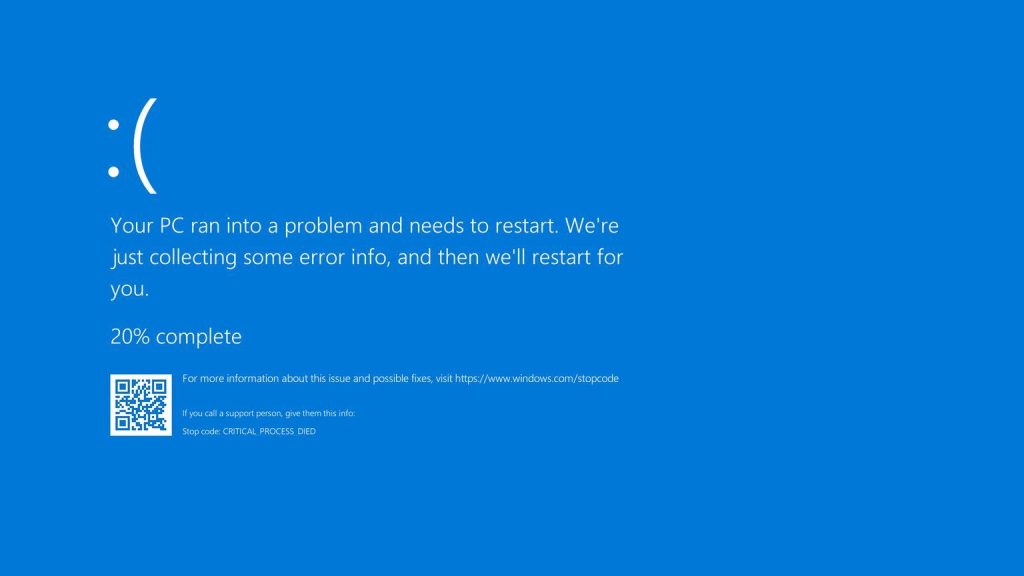CrowdStrike’s Faulty Update: A Detailed Analysis of the Bluescreen Incident
In the fast-paced world of cybersecurity, even the most reliable security solutions can sometimes cause unexpected issues. Recently, CrowdStrike, a renowned cybersecurity firm, experienced a repuation shattering scenario when a faulty update led to widespread bluescreen errors on Microsoft systems. This incident highlights the importance of rigorous testing and the potential impact of software updates on system stability.
Incident Overview

On July 19, 2024, CrowdStrike released an update to its Falcon security platform aimed at strengthening its defense mechanisms. However, this update inadvertently triggered a critical system error for many users, resulting in the notorious “blue screen of death” (BSOD) on numerous Microsoft Windows systems.
Technical Breakdown
Root Cause Analysis
The bluescreen errors stemmed from a compatibility issue between the updated Falcon sensor and certain Windows kernel-mode operations. Specifically, the update introduced changes to the sensor’s interaction with low-level system processes, which led to a fatal error in memory management.
Kernel-Mode Operations Explained
Kernel-mode operations refer to the execution of code in a privileged mode of the operating system. In this mode, the code has unrestricted access to all hardware and system resources, which is necessary for performing critical system tasks. However, this level of access also makes kernel-mode operations highly sensitive to errors. Any misstep can lead to severe system instability, including crashes.
Changes in the Falcon Sensor
The Falcon sensor is a core component of CrowdStrike’s endpoint protection platform. It operates at a deep level within the system to monitor and respond to potential threats in real-time. The update in question made modifications to how the sensor interacted with the Windows kernel. These changes were likely aimed at improving detection capabilities or optimizing performance.
Memory Management Conflict
Memory management in operating systems involves the allocation, tracking, and organization of memory usage by various processes. When the Falcon sensor update was applied, it introduced new instructions or altered existing ones in its kernel-mode driver. These changes inadvertently caused conflicts with Windows’ memory management routines.
The specifics of this conflict can be broken down into:
- Invalid Memory Access: The updated sensor may have attempted to access memory regions that were either restricted or not properly allocated, leading to access violations.
- Memory Corruption: The update might have caused corruption in critical data structures used by the Windows kernel for managing memory, such as page tables or kernel stacks.
- Resource Contention: The changes could have led to conflict over system resources, causing race conditions or deadlocks that the Windows kernel could not resolve properly.
Error Code Examination
Affected systems displayed a STOP error code, such as 0x0000001E (KMODE_EXCEPTION_NOT_HANDLED) or 0x00000050 (PAGE_FAULT_IN_NONPAGED_AREA). These codes are indicative of severe errors occurring in kernel mode, often related to invalid memory accesses or corrupted system structures.
- 0x0000001E: This error signifies that a kernel-mode program generated an exception which the error handler did not catch. It often points to issues in low-level hardware interactions or kernel extensions, such as the updated Falcon sensor.
- 0x00000050: This error occurs when a system process tries to access a memory location that it does not have permission to use. It can be caused by faulty drivers, incorrect system service calls, or defective hardware.
Immediate Consequences
Operational Disruption
The incident had significant operational repercussions, especially for businesses heavily reliant on Windows systems. Downtime ensued as IT departments worked to diagnose and rectify the issue. This disruption highlighted the cascading effects a single faulty update can have across an organization, affecting everything from productivity to customer service.
Security Implications

While the bluescreen errors were primarily a stability issue, they also raised security concerns. Systems affected by the BSOD were rendered inoperative, potentially delaying critical security operations and updates. This temporary vulnerability could have been exploited by malicious actors had the issue persisted longer.
CrowdStrike’s Response
Incident Response Strategy
CrowdStrike’s incident response was prompt and structured. The company quickly acknowledged the problem and issued a statement detailing the steps affected users should take. This included rolling back the update and applying a temporary fix while a permanent solution was developed.
Technical Remediation
Within 79 minutes, CrowdStrike released a patched update that resolved the compatibility issue. This update was rigorously tested to ensure it did not introduce new problems. Additionally, CrowdStrike provided comprehensive documentation to assist IT teams in implementing the fix smoothly. However, despite the speedy patch, many systems took hours or even days to come back online.
Microsoft’s Role and Regulatory Challenges
Kernel Access and Security
This incident raises questions about Microsoft’s decision to grant CrowdStrike access to the Windows kernel. Kernel-mode access is powerful but risky, as it allows software to interact with the core of the operating system. While such access is essential for advanced security solutions to function effectively, it also increases the risk of system instability if not managed properly.
Microsoft’s API Initiative
Recognizing these risks, Microsoft has made efforts to mitigate potential issues by introducing a new security API designed to provide necessary functionality without direct kernel access. This initiative aimed to balance the need for robust security with system stability.
EU Regulatory Intervention
However, Microsoft’s plans encountered regulatory hurdles. The European Union (EU) blocked the implementation of this new API, citing concerns about potential antitrust implications. The EU argued that the API could give Microsoft an unfair advantage over third-party security vendors by restricting their ability to compete effectively.
Lessons for Cybersecurity Professionals
1. Rigorous Pre-Deployment Testing
This incident underscores the necessity for exhaustive pre-deployment testing, especially for updates involving kernel-mode operations. Testing should encompass a wide range of system configurations and use cases to identify potential conflicts.
2. Robust Rollback Mechanisms
Organizations must maintain robust rollback mechanisms to swiftly revert to previous software versions in case of issues. This capability minimizes downtime and operational impact, providing a crucial safety net during updates.
3. Transparent Communication
Effective communication from software vendors is vital during such incidents. CrowdStrike’s transparent and timely updates helped manage user expectations and guide them through the remediation process, underscoring the importance of clear and open communication.
4. Proactive Security Measures
Organizations should implement proactive security measures, such as regular system backups and redundant security controls. These measures ensure that operations and data remain secure even during unforeseen disruptions.
Strategic Implications for the Industry
Enhanced Collaboration
The CrowdStrike incident highlights the importance of collaboration between software vendors, cybersecurity firms, and end-users. Sharing information about potential risks and mitigation strategies can enhance overall system resilience.
Adopting Best Practices
Adopting industry best practices for software development and update deployment is crucial. This includes continuous integration/continuous deployment (CI/CD) pipelines, automated testing, and user feedback loops to catch and address issues early.
Future-Proofing Cybersecurity
As cybersecurity threats evolve, so too must the strategies and tools we use to combat them. Investing in advanced testing frameworks, machine learning-based anomaly detection, and robust incident response plans can future-proof systems against similar incidents.
Conclusion
The recent CrowdStrike update incident serves as a stark reminder of the complexities and risks associated with cybersecurity management. By learning from such events, the industry can improve its resilience and responsiveness to ensure robust protection for all users. As aspiring cybersecurity professionals, understanding and analyzing such incidents equips us with the knowledge to anticipate challenges and implement effective solutions in our future roles.
Resources
- https://youtu.be/ZHrayP-Y71Q?si=PD7RK4EBPt7fusFm
- https://www.crowdstrike.com/falcon-content-update-remediation-and-guidance-hub/
- https://www.eye.security/blog/crowdstrike-falcon-blue-screen-issue-updates
- https://www.techtarget.com/whatis/feature/Explaining-the-largest-IT-outage-in-history-and-whats-next
Interesting read! Thanks for keeping us updated with your analysis and accurate information!